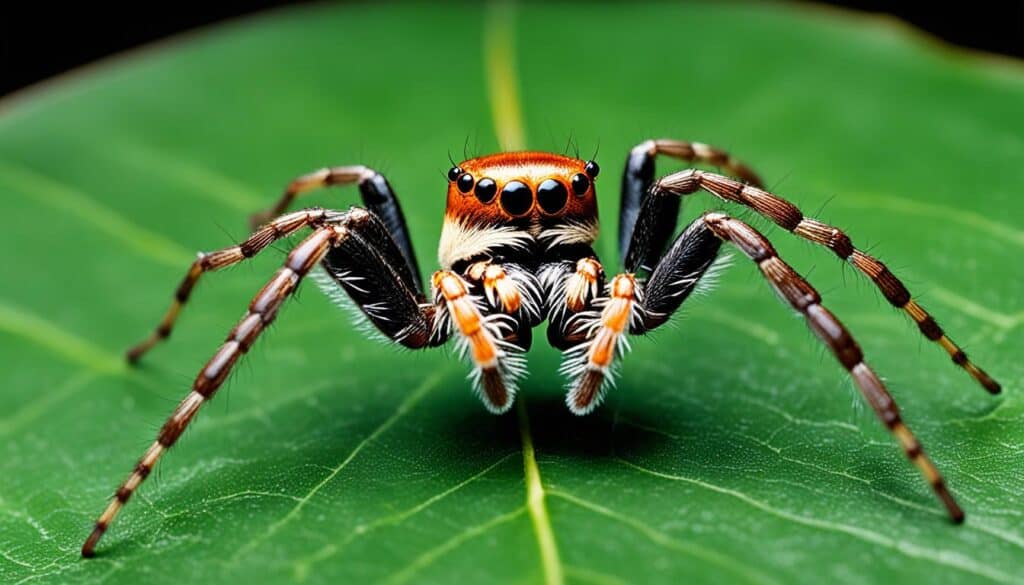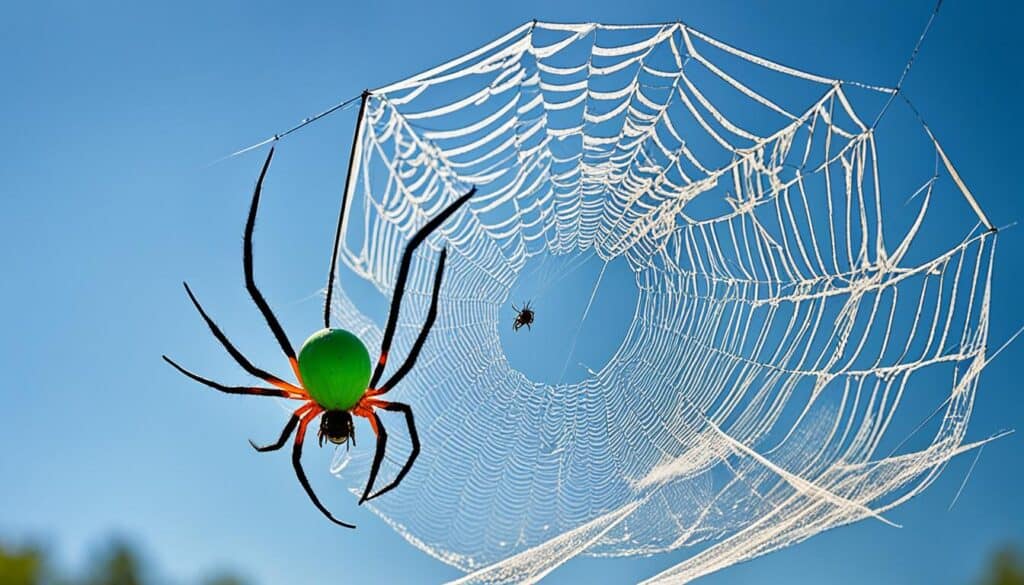Did you know a Joro spider can travel up to 100 miles using silk and wind? Just like Spider-Man, but real, without saving the city! Originating from East Asia, this spider is now on the US East Coast. Since 2013, they’ve moved from Georgia, using vehicles and their ballooning skill. It’s quite a view seeing spiderlings float in the sky. Are they fascinating or scary? That depends on your view of spiders!
Their effect on local ecosystems is interesting. Brightly colored female Joro spiders catch pests like stink bugs in their big webs. This is good for the environment, even though they’re invasive. These spiders are admired and feared. Their survival skills keep people talking in New England and other places. Georgia was their first US home. They continue to fascinate and sometimes frighten people.
Key Takeaways
- The Joro spider can balloon up to 100 miles using air currents.
- Invasive species have been established in Georgia since 2013.
- Their spread is aided by both ballooning and hitching rides on human transport vehicles.
- Females of the species are brightly colored and produce large webs, capable of trapping various pests.
- Despite their rapid spread, Joro spiders offer some ecological benefits by preying on nuisance pests.
- These spiders have gone from Georgia and are now slowly making their presence known across the US East Coast.
Introduction to the Joro Spider
Meet the Joro spider, also known as Trichonephila clavata. This spider stands out with its colorful looks. Female Joros are large and brightly colored, unlike the smaller, brown males. It’s like watching a fashion show in the spider world.
These spiders have been popping up along the East Coast since 2014, starting in Georgia. From Alabama to Virginia, they’re spinning huge webs in trees and on buildings. People often get scared when they see these large, wheel-shaped webs above them.
Joro spiders are amazing at adapting to new environments. Even though they’re from Asia, they’ve managed to live in places as cold as New England. They compete with local spiders for food and living spaces, showing incredible resilience.
Researchers have discovered something interesting about Joro spiders. When something bothers them, they don’t move for over an hour. Other spiders move around a lot, but Joros stay still, playing the ultimate “freeze tag.” This behavior is different than most spiders and makes us think about their effect on local animals and plants.
Joro spiders can travel long distances without planes or cars. They use a method called ballooning, where they float on the wind with silk. This helps them spread far from Georgia, moving across the East Coast.
As we observe these spiders, we wonder about their impact on the environment. Will they be a problem, or just an interesting part of nature? They’ve certainly got our attention with their unique abilities and way of living.
Joro Spider Behavior: What Makes Them Unique?
One of the coolest things about Joro spiders is their ballooning technique. They can travel up to 100 miles by air. Imagine that! Their webs are also fascinating. They create big, yellow-tinted webs that look like beautiful wheels. It’s amazing to think we have such skilled architects right in our backyards.
When it comes to food, Joro spiders are choosy. They prefer invasive stink bugs over something harmful like monarch butterflies. This means they can actually help our environment by eating pests. It’s like they know which bugs are bad and which ones to avoid.
Joro spiders may look scary because they are big. They can be 3-4 inches wide when their legs are stretched out. But, they are not aggressive. If they feel threatened, they would rather run away than fight. This is good news for us who get nervous around spiders.
Their ability to live in cold weather means they might spread to new areas. This could affect local animals and the balance of nature. We need to watch how they interact with native species. It’s important for the health of our ecosystems.
What makes Joro spiders truly special is their unique behavior and role in nature. They build impressive webs and carefully choose their food. This helps control certain pests. However, their spread makes us think about how they impact other species and our environment.
The Spread of Joro Spiders Across the East Coast
Since 2013, Joro spiders have turned into a major topic of spooky stories. First seen in Georgia, these spiders have spread across the Southeast U.S., growing rapidly in numbers. Their way of moving around is as sneaky as a cat eyeing a sandwich. Everyone is wondering: how do they move so far?
The secret to their travel? A mix of human-assisted transportation and a technique known as ballooning. Spiderlings float on the wind, moving naturally about 10 miles a year. They also hitch rides on trucks and in luggage. This makes them tricky to keep track of.
Joro spiders are now being found in Tennessee. They’re looking to move into Virginia and North Carolina next. They even survive cold winters. This could mean they’ll spread throughout the entire East Coast, except for the treeless Midwest.
But what about the impact on our ecosystem? Joro spiders do help control pests, including monarch butterflies. Yet, they could disrupt local predators and cause conflicts among native species.
Seen a Joro spider? You’re not alone. Their population is growing fast, surprising many with new sightings. Their bite is less painful than a bee sting, but it’s best to stay away. Watching them is okay, but do so from afar.
Watching their movement from the East Coast to other areas will help us understand their impact. For those in Tennessee and elsewhere, be prepared. Joro spiders aren’t going anywhere soon.
Joro Spiders in the Ecosystem: Good or Bad?
Let’s explore the debate on Joro spiders’ role in nature. On one side, they could help us by eating pests like stink bugs. We might appreciate having natural pest control thanks to these large spiders. But, not everything about these spiders is positive. They might eat a lot of native insects, not just the pests.
A big worry is how they might affect native species. Experts think Joro spiders can survive well. They can travel far by “parachuting” and build big webs. This could make it hard for native spiders and might harm our ecosystems. It’s like having a loud cousin over that eventually breaks something.
There are also concerns about the bigger picture, including public health. Joro spiders do well in many places and can handle cold. This means they could spread further, maybe even to New England. The effect they have on crops is still unknown. Do we view them as helpful or harmful? We need more study and to keep an eye on them to answer these questions.




